Verdict
In terms of raw performance, the Dyson 360 Vis Nav is a beast of a robot vacuum cleaner. With suction power to rival a regular vacuum cleaner, this is the most powerful robot that I have ever tested. It made short work of dirt on carpets and hard floors, needing only a single pass to do so. If you just want a suction-only cleaner, then this one is incredible. However, the very high price may be an issue for many, while those with primarily hard floors may prefer a model that can mop.
Pros
- Incredible suction
- Clever bin empyting
- Piezo sensor adjusts power automatically
Cons
- Expensive
- Slightly basic app
-
Type This robot vacuum cleaner is a suction-only model, so ideal for homes with lots of carpets.
Introduction
While there are a lot of good robot vacuum cleaners out there, they’re not built to offer the power of a plug-in or cordless cleaner, making them more general maintenance cleaners rather than replacements.
The new Dyson 360 Vis Nav is built to be different: more powerful and built to clean properly, adjusting power automatically based on the level of dirt it detects.
It certainly lives up to this brief, and it’s the single most powerful robot vacuum cleaner I’ve tested. That makes it ideal for carpets, but the lack of a mopping option means that those with hard floors may prefer an alternative.
Design and features
- Piezo sensor detects dust levels
- Squat and wide design
- App requires the map to be divided
Since Dyson launched its last vacuum cleaner, the Heurist 360, back in 2020, its designers have been back to the drawing board for the Dyson 360 Vis Nav.
Rather than the tall, round body, the new robot vacuum cleaner is shorter and wider, built to slide under furniture (99mm clearance) for an all-round clean.
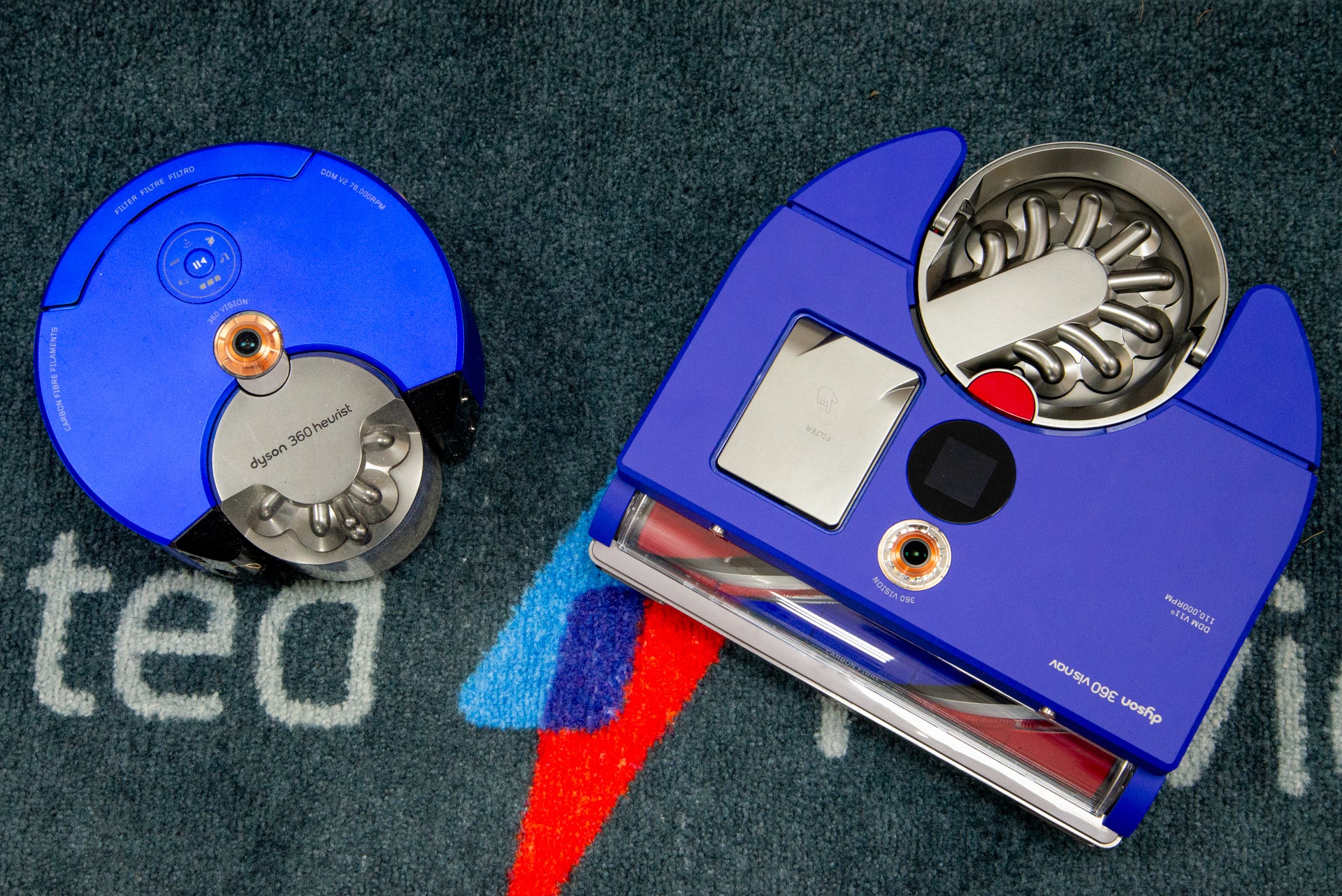
That also means that there’s a wider multi-purpose brush bar. With its combination soft roller and carbon fibre brushes, this roller has been designed to work equally as well on hard floors and carpets.
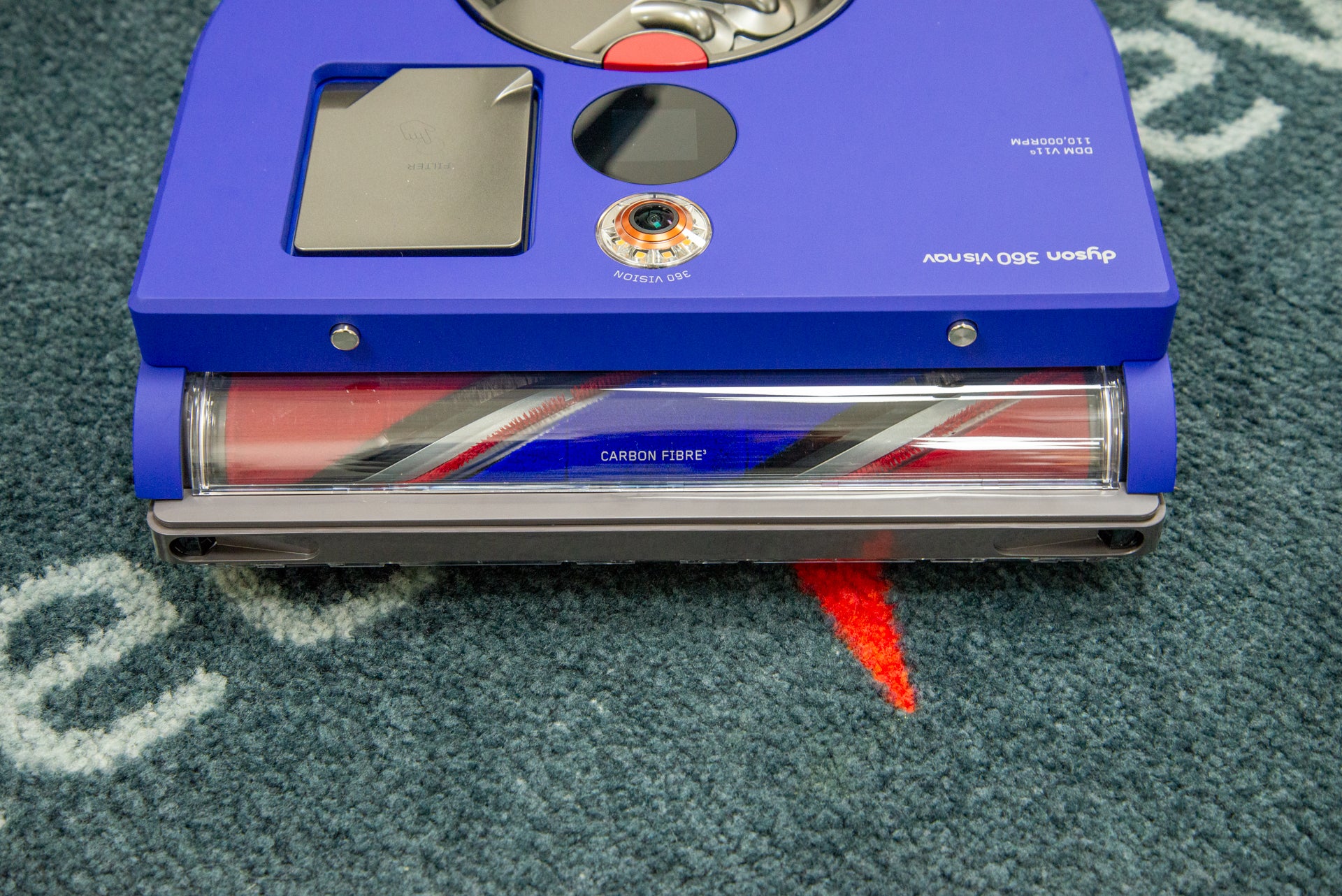
Flip the robot over, and this brush can be removed for easy cleaning. At this point, you’ll notice that there are no side-sweeper brushes. Instead, the brush roller runs edge-to-edge for full coverage.
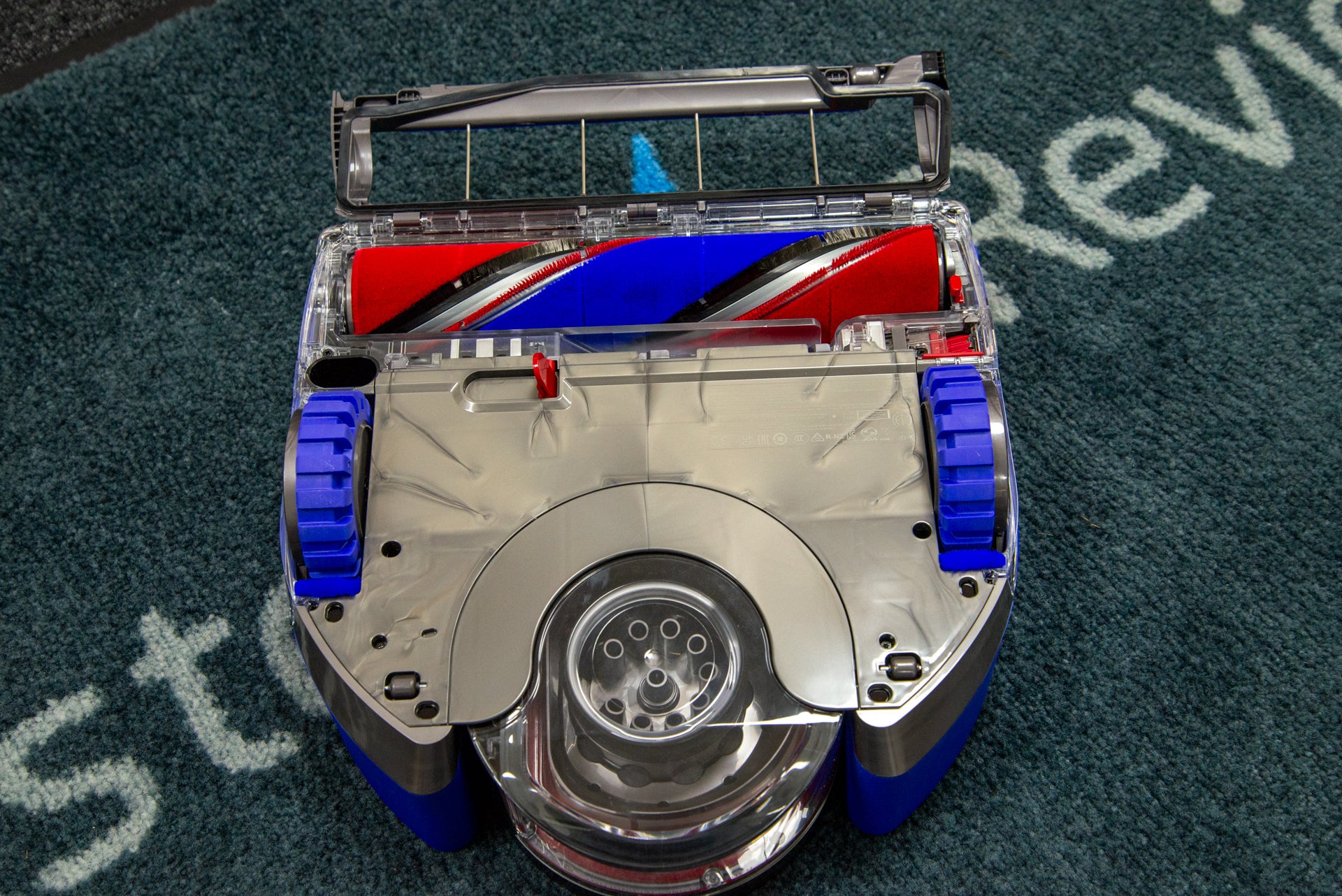
With a wall-follow sensor, the Dyson 360 Vis Nav is built to follow walls, skirting boards and plinths. While hugging the wall, its side-edge actuator pops out to direct suction towards the edge of the room. This robot can clean edges with its full suction power rather than hoping that side sweeper brushes will move dirt into the main suction path.
Dyson has a similar dock on the Dyson 360 Vis Nav as with its previous robot vacuum cleaners. However, this new dock has charging points at the front, rather than bottom, and it’s more stable. Manually putting the 360 Heurist back on its dock could be tricky, but the job is much easier with the Dyson 360 Vis Nav.
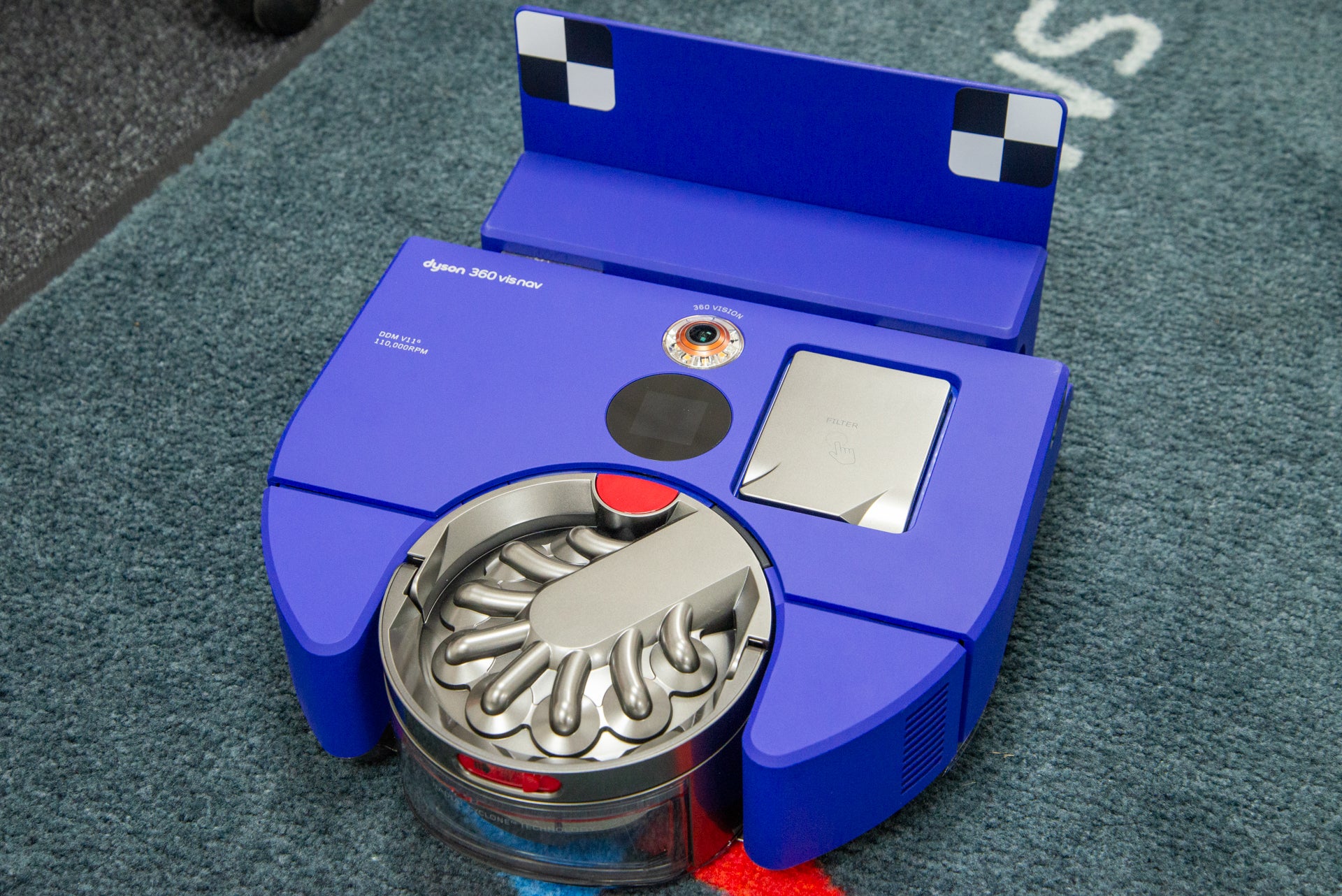
There’s no auto-empty option on this robot, nor does it have a mopping option. If you want to mop floors and have as little to do with maintenance as possible, then the Ecovacs Deebot T20 Omni may be more up your street.
Here, the Dyson 360 Vis Nav has a 570ml dust bin, which is very large for a robot. This pops out the front, then has a pull-up handle and eject button. This combination let me empty the bin cleanly into a main bin, without getting dust everywhere.
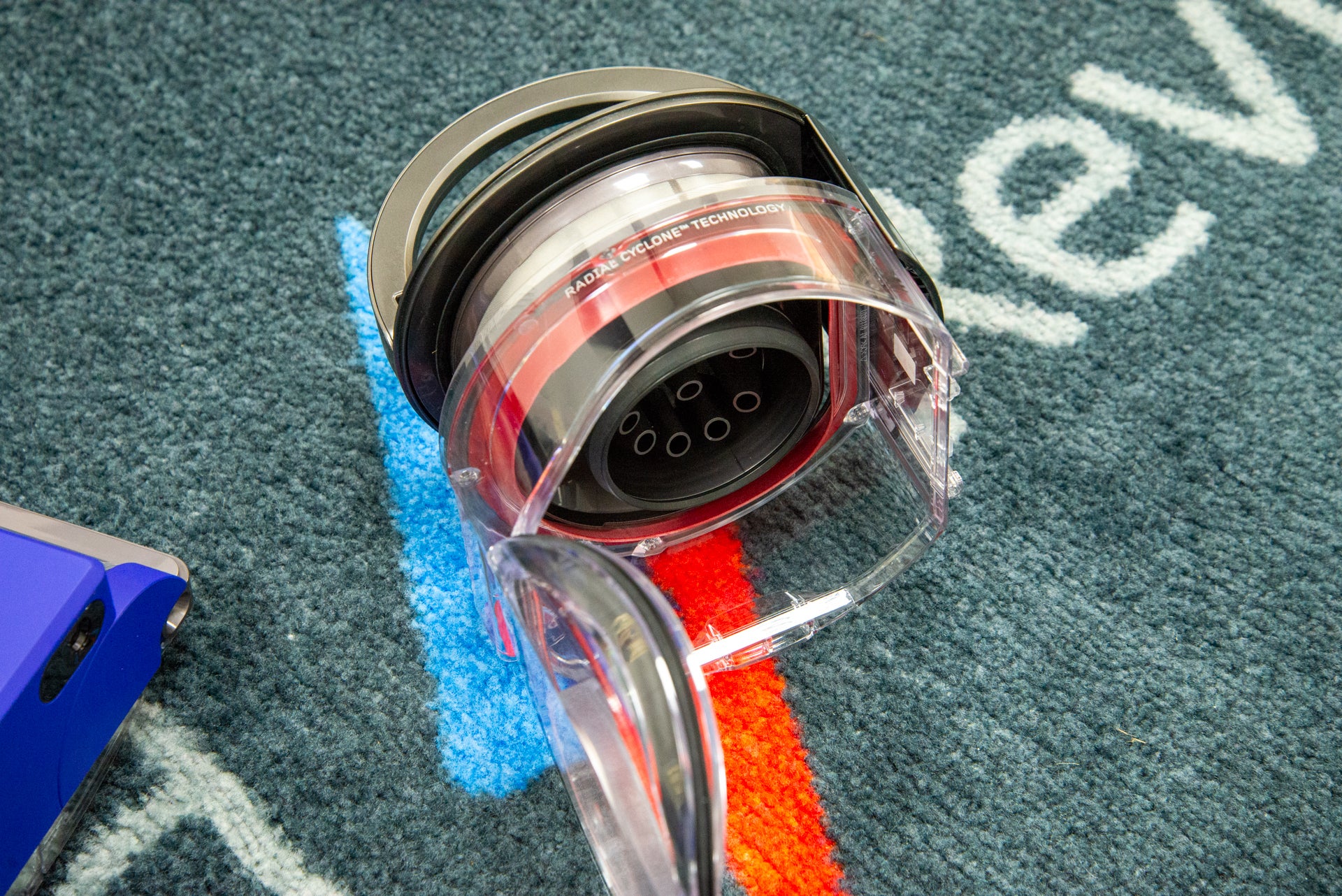
There’s a separate pop-out filter on top, which can be rinsed and cleaned when it’s dirty. This filter is similar to the ones that Dyson uses on its handheld cleaners, such as the Dyson Gen5detect.
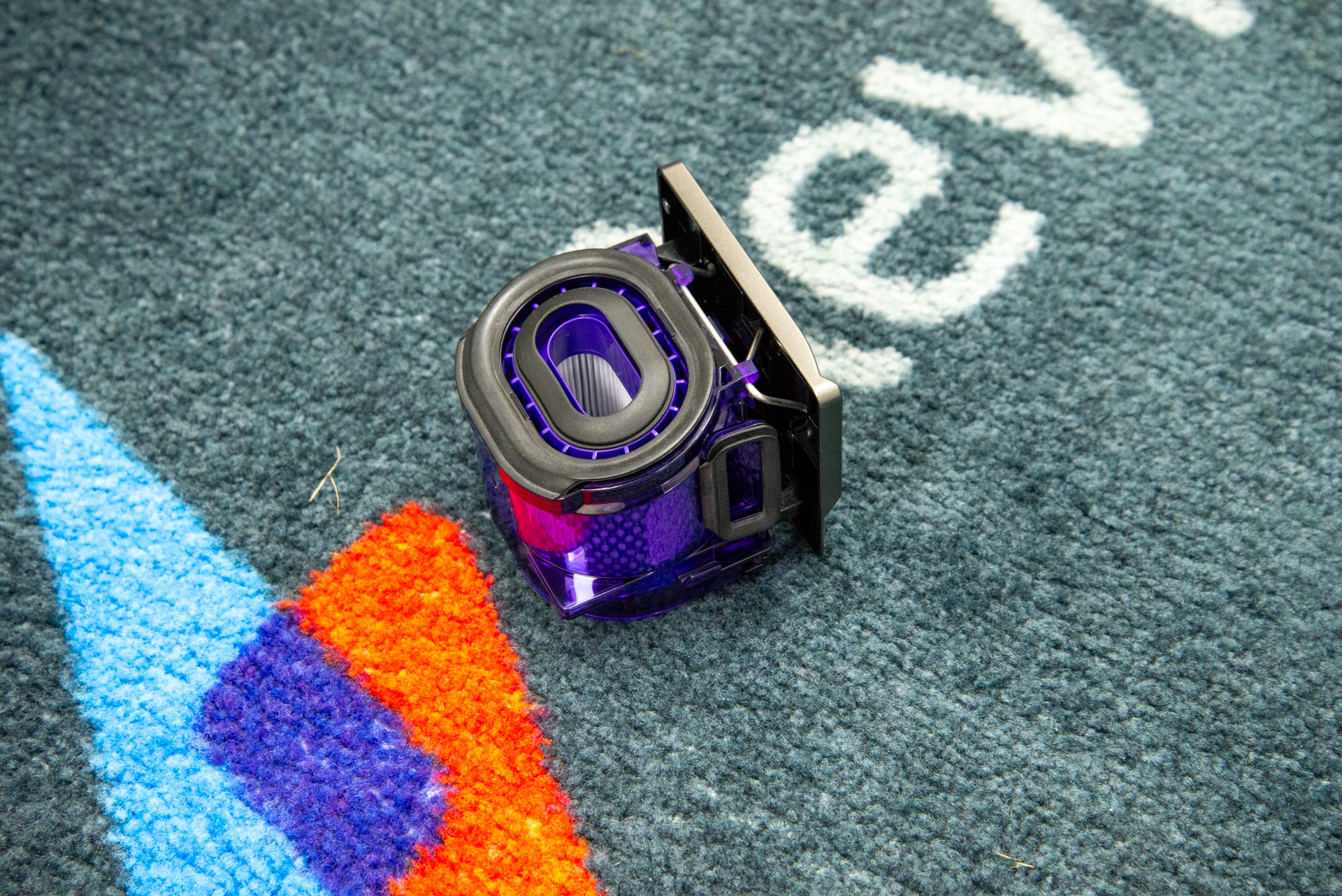
Control of the Dyson 360 Vis Nav is via the MyDyson app, which is home to all of the company’s smart products. I found it quick to get the robot paired to the app, at which point I started a mapping run.
As the robot’s name suggests, navigation is provided by a 360-degree camera that sits on top, alongside various obstacle and wall detection sensors. I don’t think that the 360-degree camera is quite as quick at detecting a location as LiDAR, so the Dyson 360 Vis Nav takes a little longer to generate its map than some of the competition.
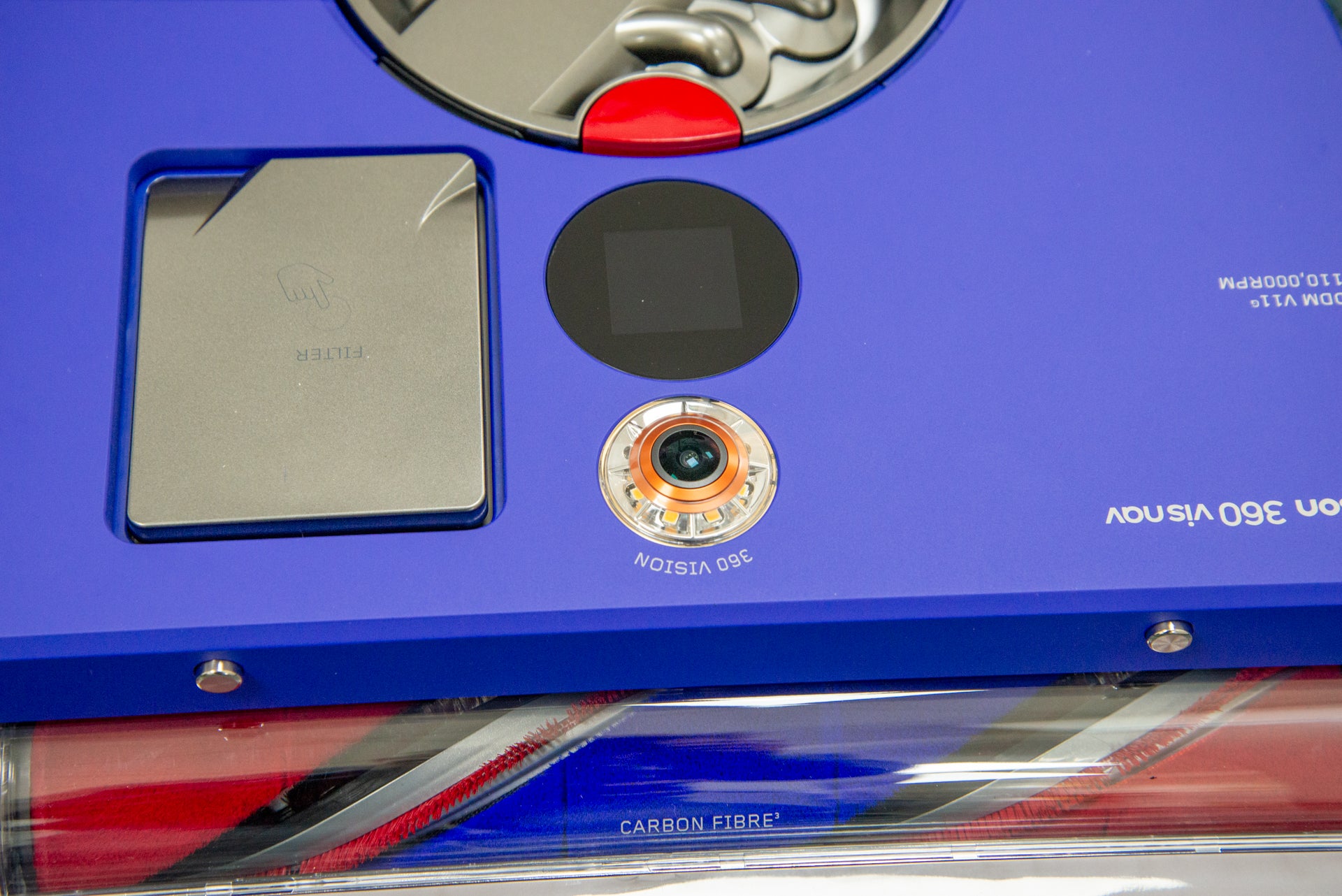
That’s not a massive problem, as once the job has been done, you don’t need to bother sorting it out again. With the map created, the app then asks you to zone it into rooms. This is a requirement, which is a shame in some ways.
In my Victorian terraced home, the kitchen is a step down from the rest of the first floor. When I mapped this room, I didn’t want to have to split it into different zones, as the map was one room.
You can create multiple maps, but the robot’s dock has to be moved; it can’t create a map from where you move the cleaner. However, with the Dyson 360 Vis Nav off its dock, you can start a clean using the touch-sensitive screen on top, but you can only pick the power mode and the robot doesn’t know where it is.
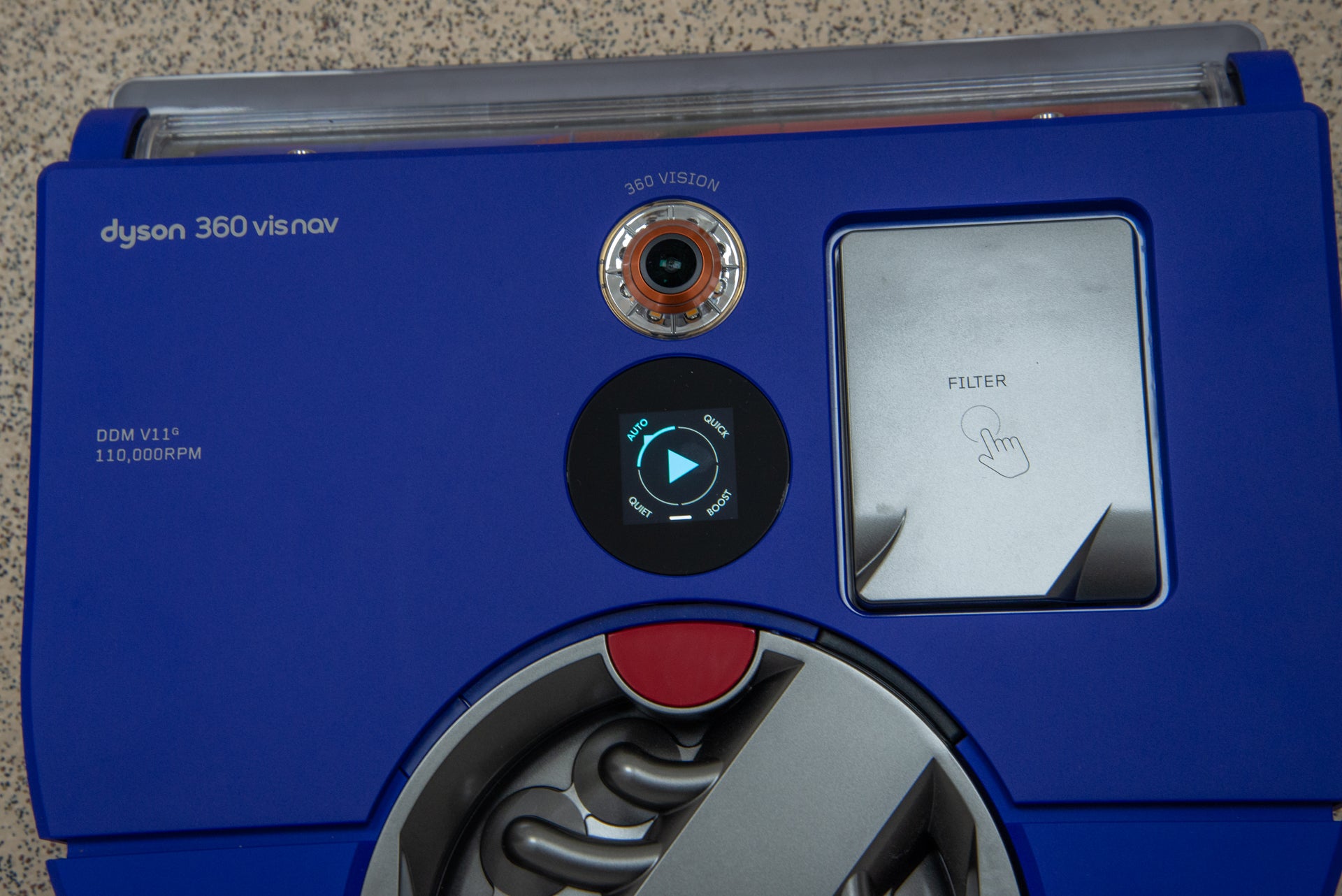
For areas that you’ve mapped, the app lets me pick different options for each area. No brush bar is useful for deep-pile rugs and carpets; the No climb option prevents the robot from mounting troublesome bits of furniture, such as those Ikea chairs with the strip of wood at the bottom.
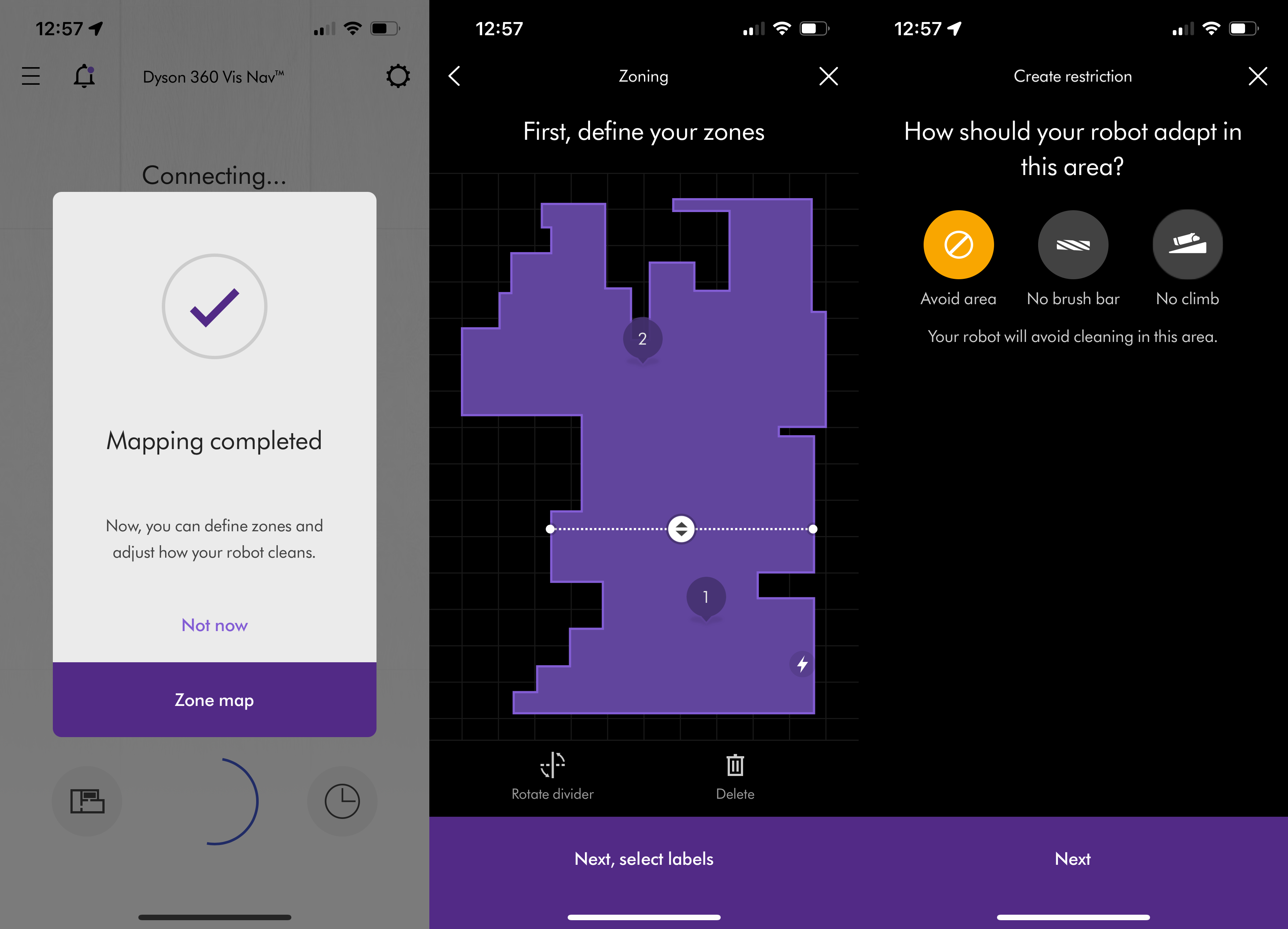
When you’re ready, the Dyson 360 Vis Nav can be controlled via the app. The simplest option is to set the robot to clean everywhere, picking the power mode you want: Auto, Quick, Quiet and Boost.
Alternatively, I could choose which areas to clean (or ignore), setting the power mode I wanted for each.
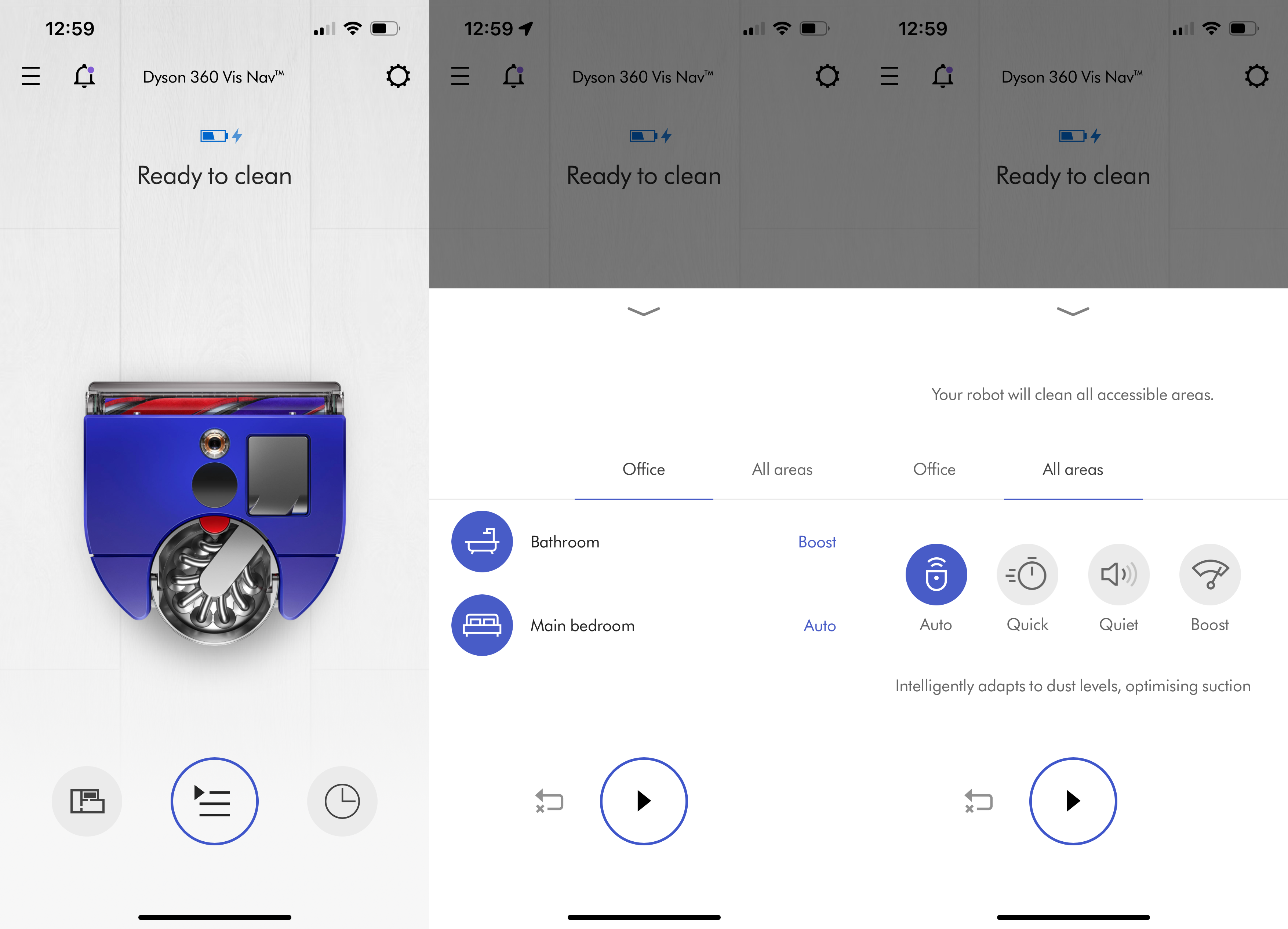
Generally, it’s best to use the Auto mode. This uses the built-in Piezo sensor to detect dust and then adjusts power on the fly. In addition, this sensor is used to create a dirt map, which shows where your home was the dirtiest on each clean.
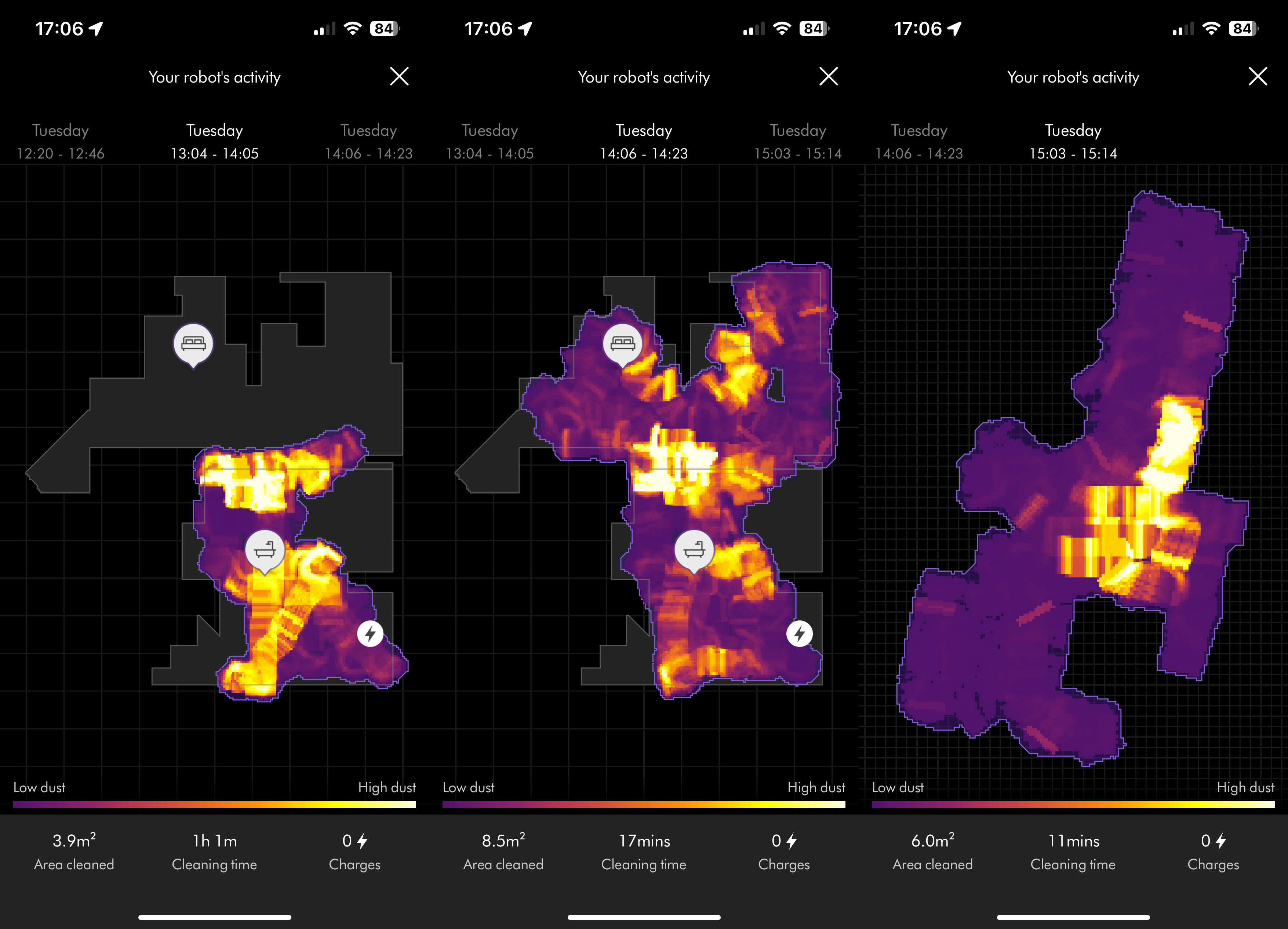
I couldn’t find an option to send the robot to clean a specific area marked on the map, so spot cleaning isn’t as easy here as with some other models.
Amazon Alexa and Google Assistant support are built in, giving voice control to start and stop cleans.
Performance
- Incredible suction power
- Excellent edge performance
Dyson is an expert at making regular vacuum cleaners and has poured that knowledge into making the Dyson 360 Vis Nav the most powerful robot cleaner I have ever used. I started off with my normal tests, running the cleaner on its Auto mode.
First, I sprinkled a teaspoon of flour onto my test carpet. With this test, I’ve not seen a robot make a clean sweep in one pass, with two normally required; even then, there’s usually some dirt left behind. Not so with the Dyson 360 Vis Nav, which detected the dirt level, upped its power and then left a completely clean sweep.


That’s incredible performance, and a handheld vacuum cleaner wouldn’t be able to do any better.
Next, I moved on to the hard floor test. My flour in the middle of the hard floor was gone with a single pass.

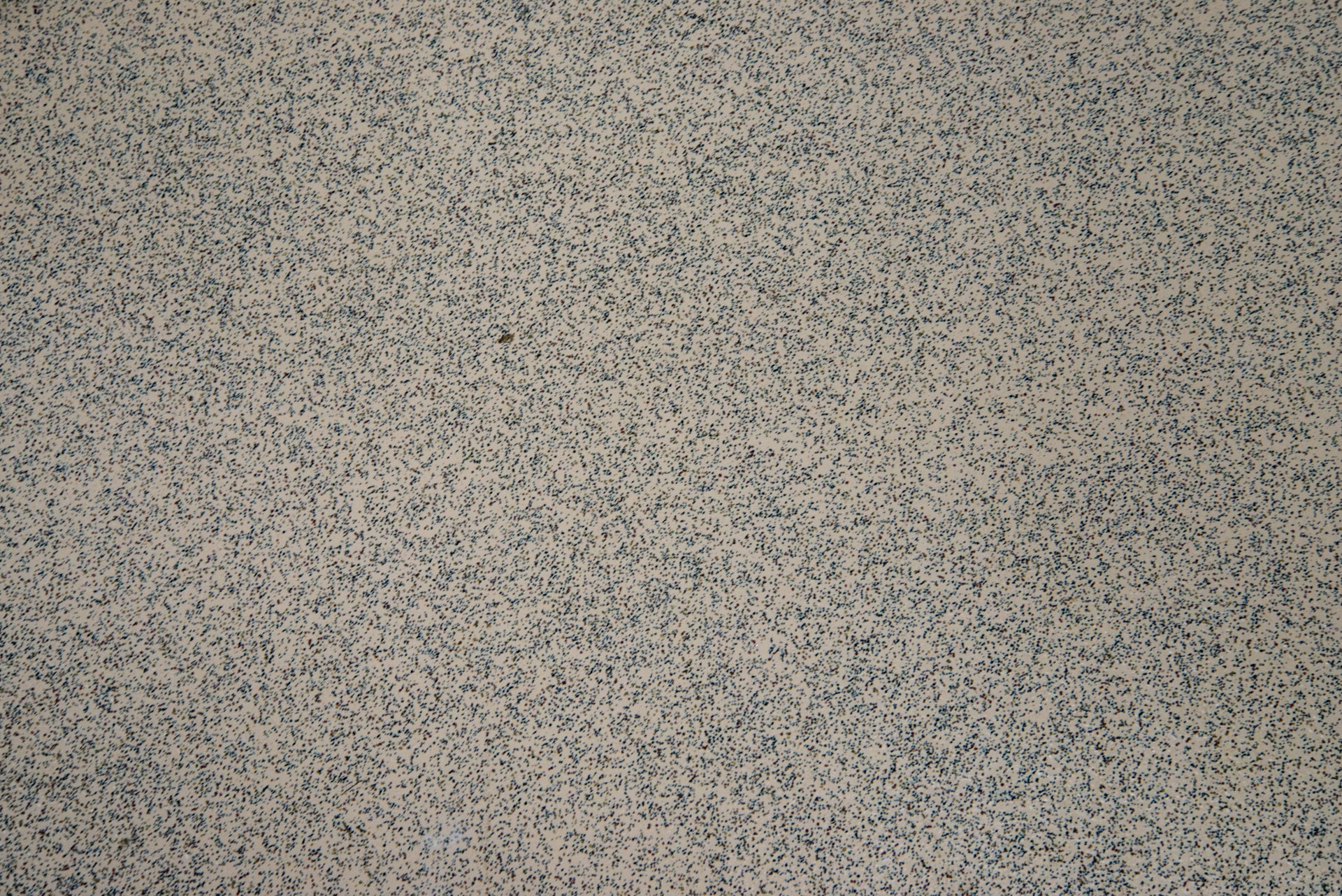
For the tougher test, I sprinkled flour up to the kitchen plinth. Again, results were impressive, with the majority of the mess gone. This is a bigger spill than you’d normally have, and the Dyson 360 Vis Nav did better than its rivals.
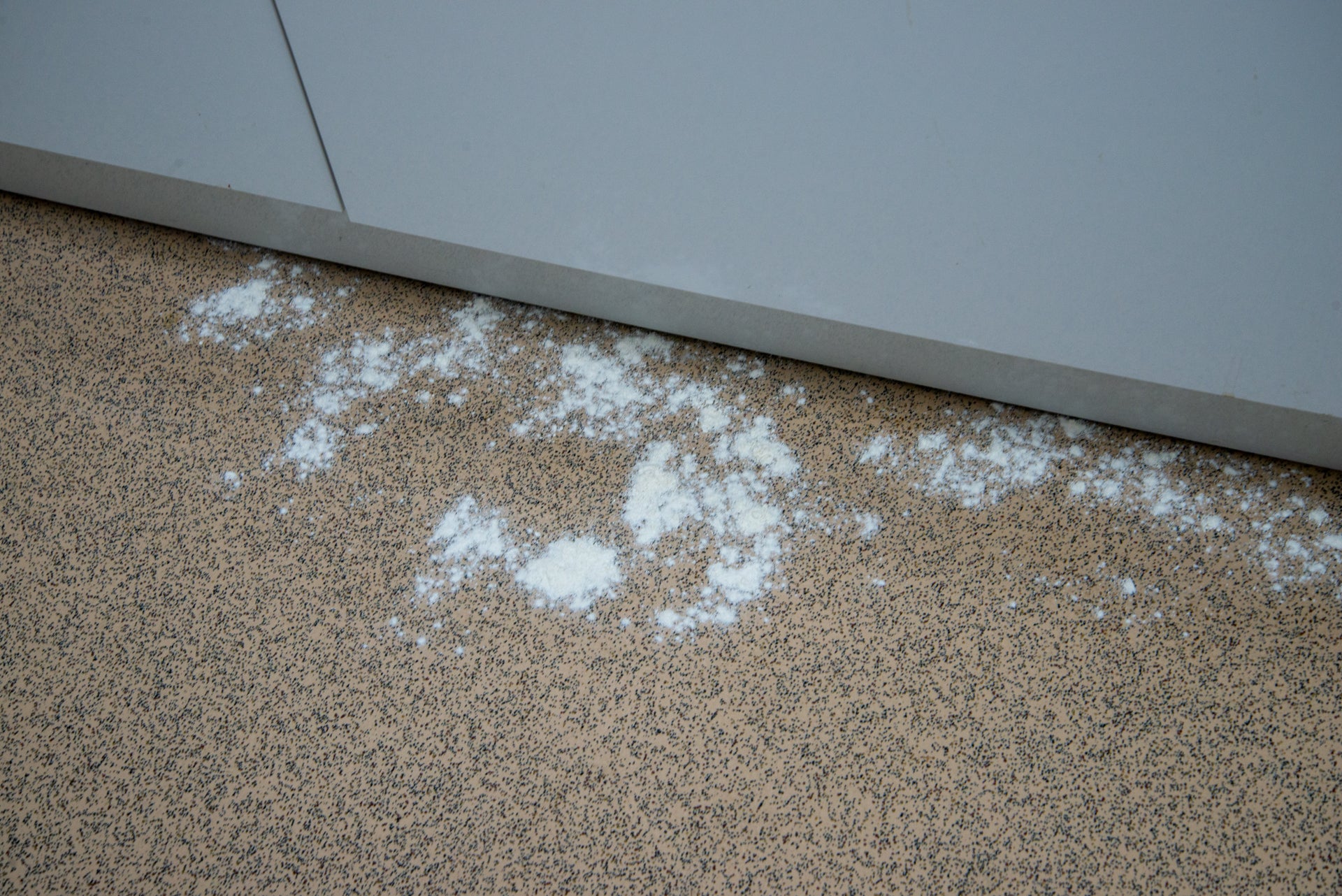
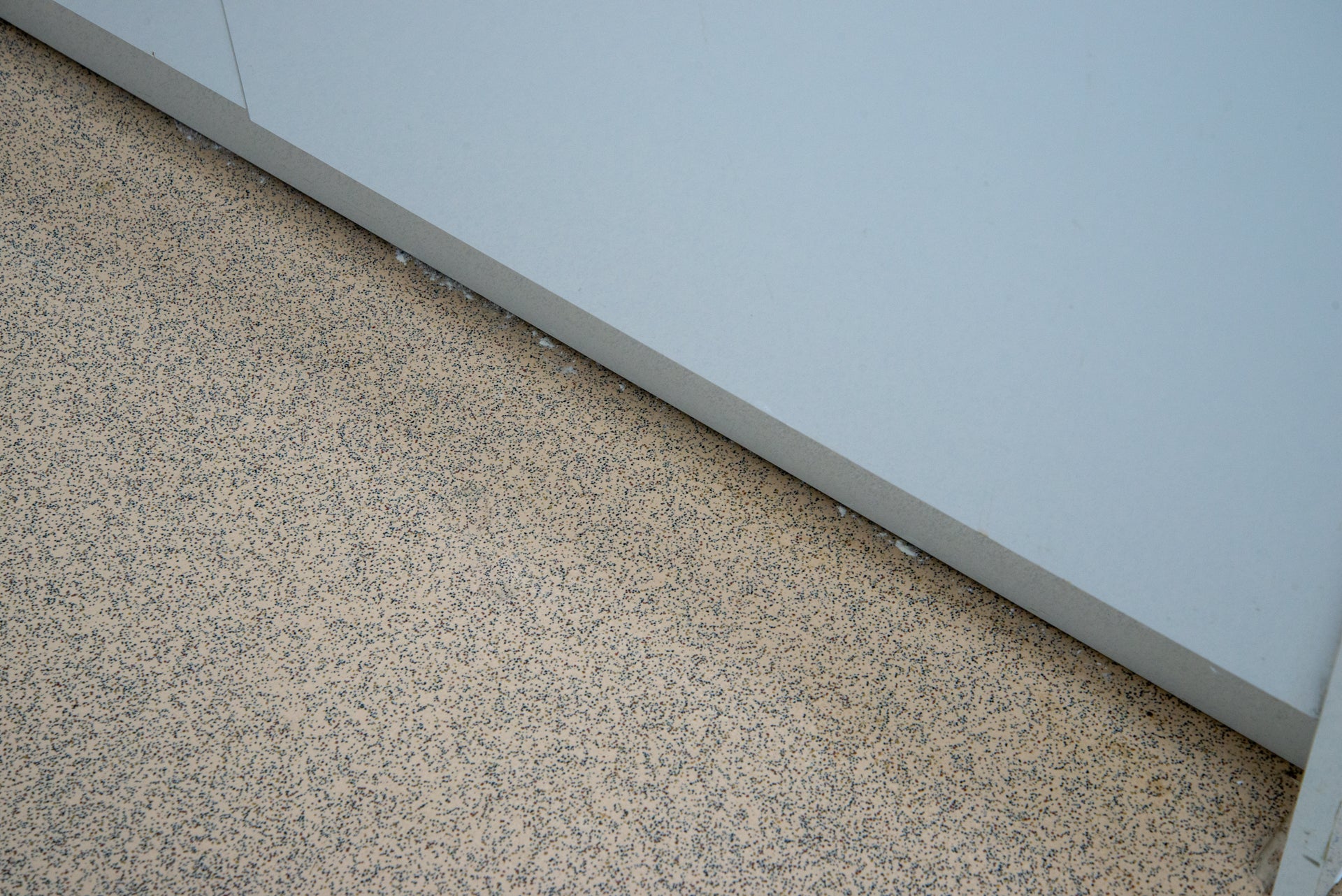
At 62.3dB, the Dyson 360 Vis Nav isn’t particularly loud either. Sure, I could hear it, but given the powerful suction I think it’s actually quite quiet.
Battery life is quoted at up to 50 minutes. In terms of Auto mode, this seems about right, but how dirty your home is will affect this. Cleaning the Trusted Reviews home tech lab, I found that the Dyson 360 Vis Nav needed to pause for a charge part way through cleaning. Rival cleaners, such as the iRobot Roomba j7+, tend to last longer on a single charge.
Battery life has to be taken with a pinch of salt, as it’s the combination of life and cleaning performance that matters. Given that the Dyson 360 Vis Nav cleans better than any other robot cleaner I’ve tested and does so on a single pass, shorter battery life isn’t such an issue.
Navigation is generally very good. I found that the Dyson 360 Vis Nav moved around furniture well, and didn’t fall down my steps. It also avoided wedging itself under low furniture.
It can be a bit of an odd robot. While cleaning it will often stop, turn its motor off and sit there ‘thinking’, before carrying on. It makes no difference to cleaning quality, but it is noticeable.
Although it navigates by camera, the Dyson 360 Vis Nav can’t spot and avoid common obstacles, such as power cables and socks. It’s worth tidying obvious obstacles away before starting a clean.
Latest deals
Should you buy it?
You want the most powerful robot vacuum cleaner
Exceptional performance, particularly on carpet, makes this robot as good as doing it yourself.
You want mopping or something cheaper
There are cheaper rivals if you can take more basic cleaning, while those with hard floors may prefer a robot that mops such as the Ecovacs Deebot T20 Omni.
Final Thoughts
For those who just want a robot vacuum cleaner and don’t need/want mopping or auto emptying, there’s nothing better than the Dyson 360 Vis Nav, particularly on carpet. Delivering a clean that rivals that of a cordless stick, the suction power is impressive.
Yet, it’s hard to stomach the price: £1399.99 is a lot of money for a robot vacuum cleaner, particularly one that doesn’t have a self-empty station and that doesn’t have a mop. Its app is also a little more basic compared to the competition.
If you want the best standalone suction and don’t care about price, then the Dyson 360 Vis Nav is for you. If you’re on a tighter budget or need more features, check out my guide to the best robot vacuum cleaners.
How we test
Unlike other sites, we test every robot vacuum cleaner we review thoroughly over an extended period of time. We use industry standard tests to compare features properly. We’ll always tell you what we find. We never, ever, accept money to review a product.
Find out more about how we test in our ethics policy.
Used as our main robot vacuum cleaner for the review period
We test for at least a week
Tested with real-world dirt in real-world situations for fair comparisons with other vacuum cleaners
FAQs
Yes, you can map each floor, but you have to move the robot’s dock to do so.
No, you have to empty it manually, although that is an easy job.

























